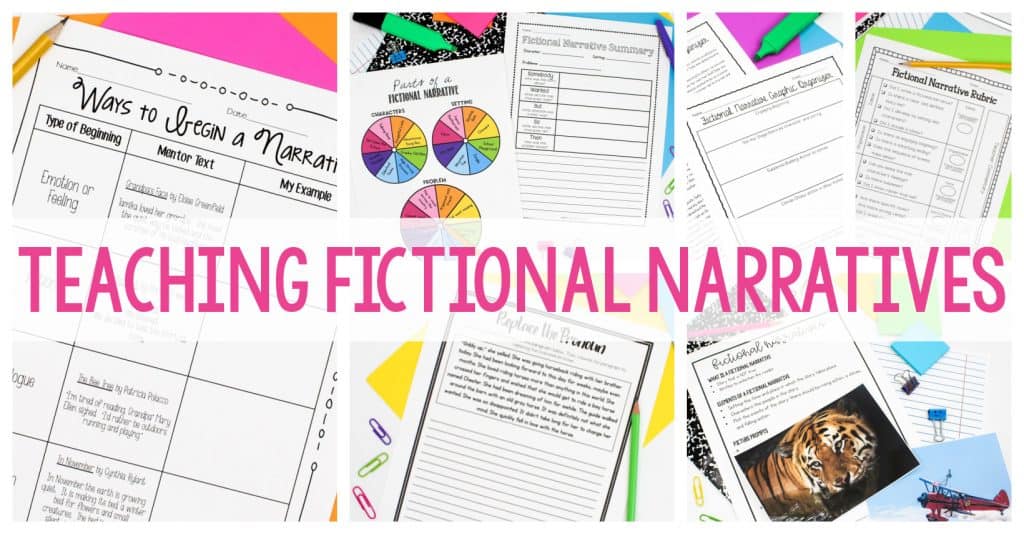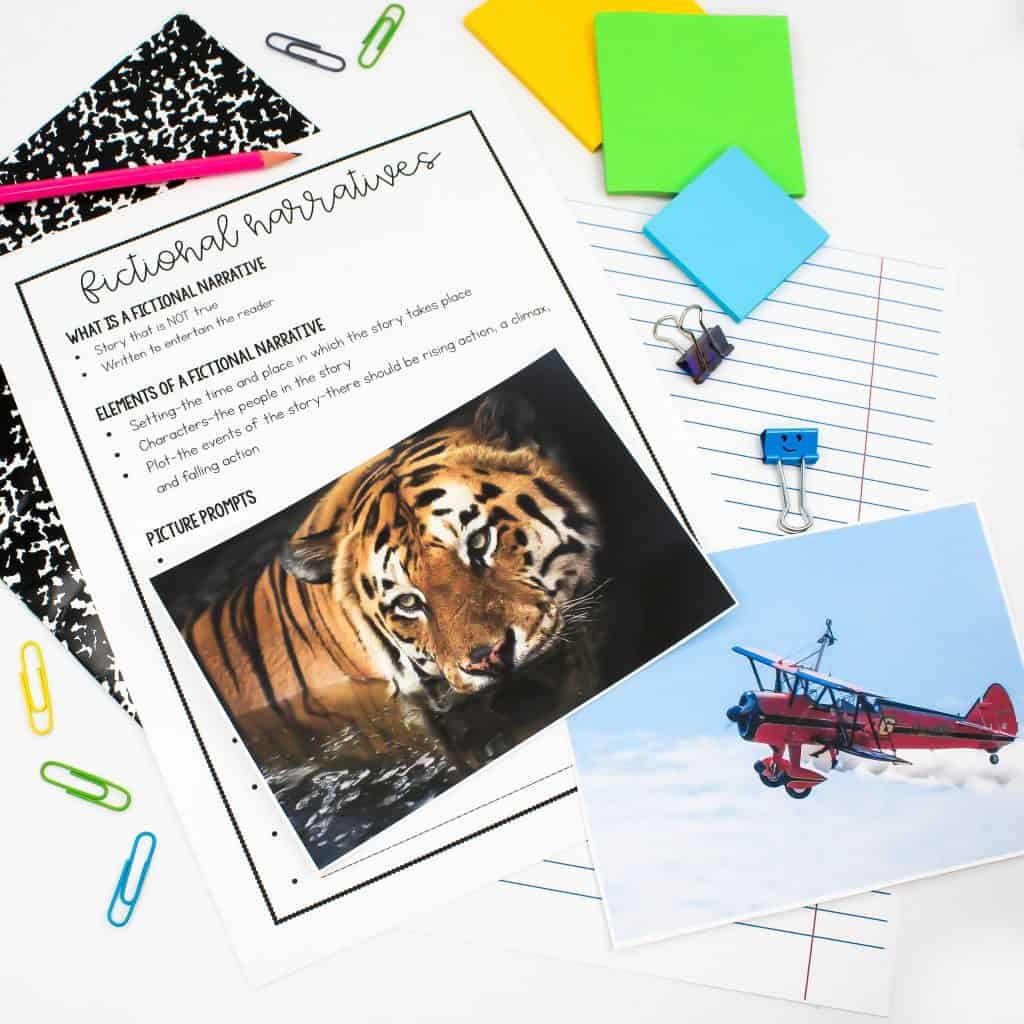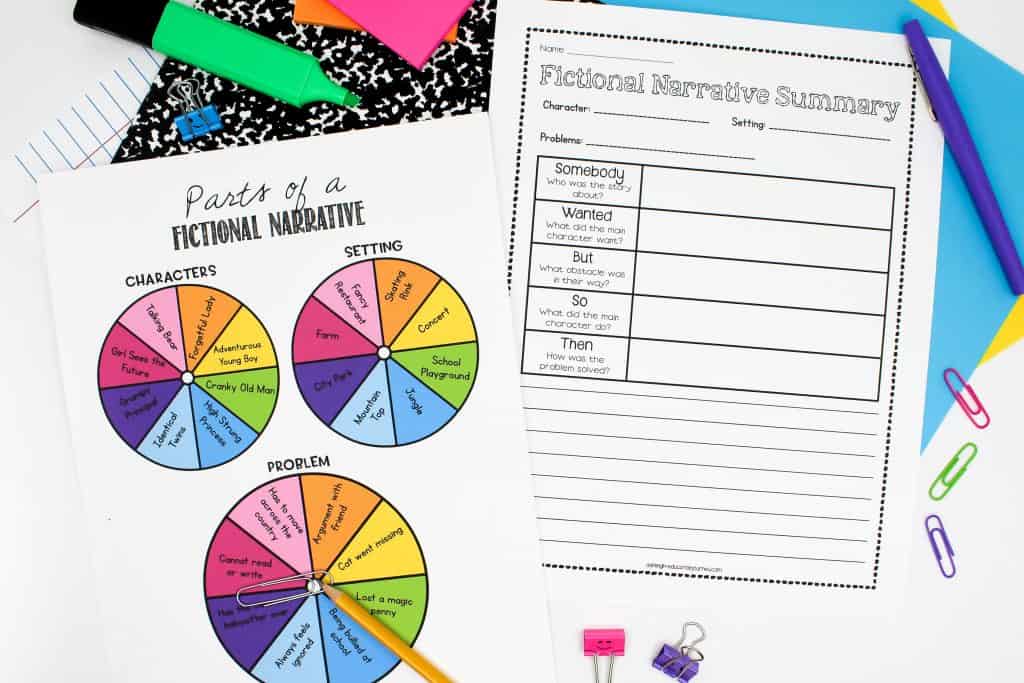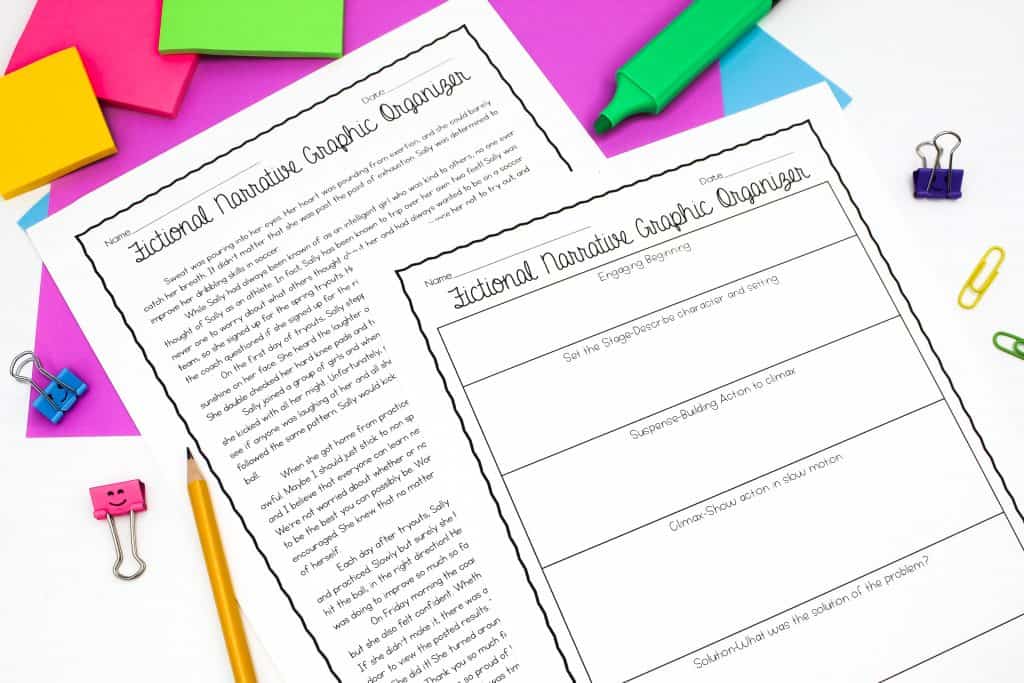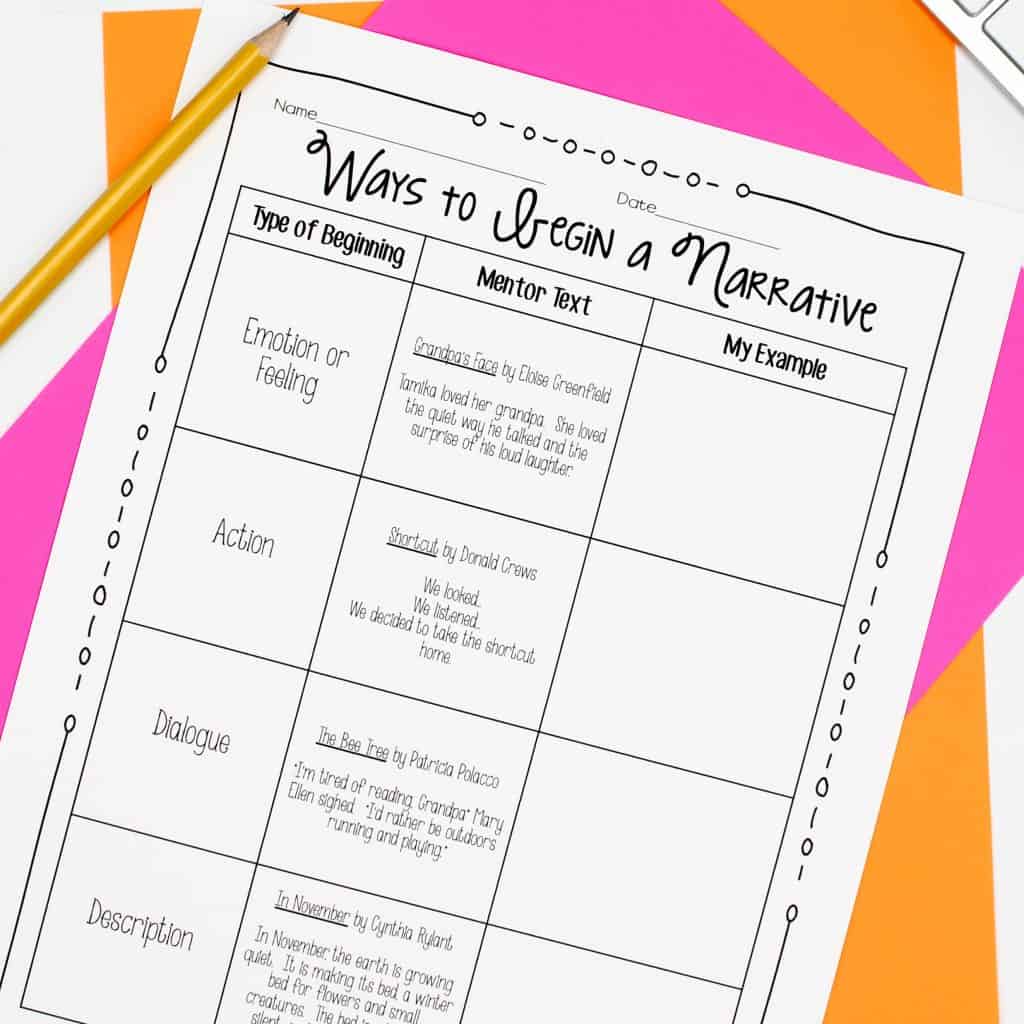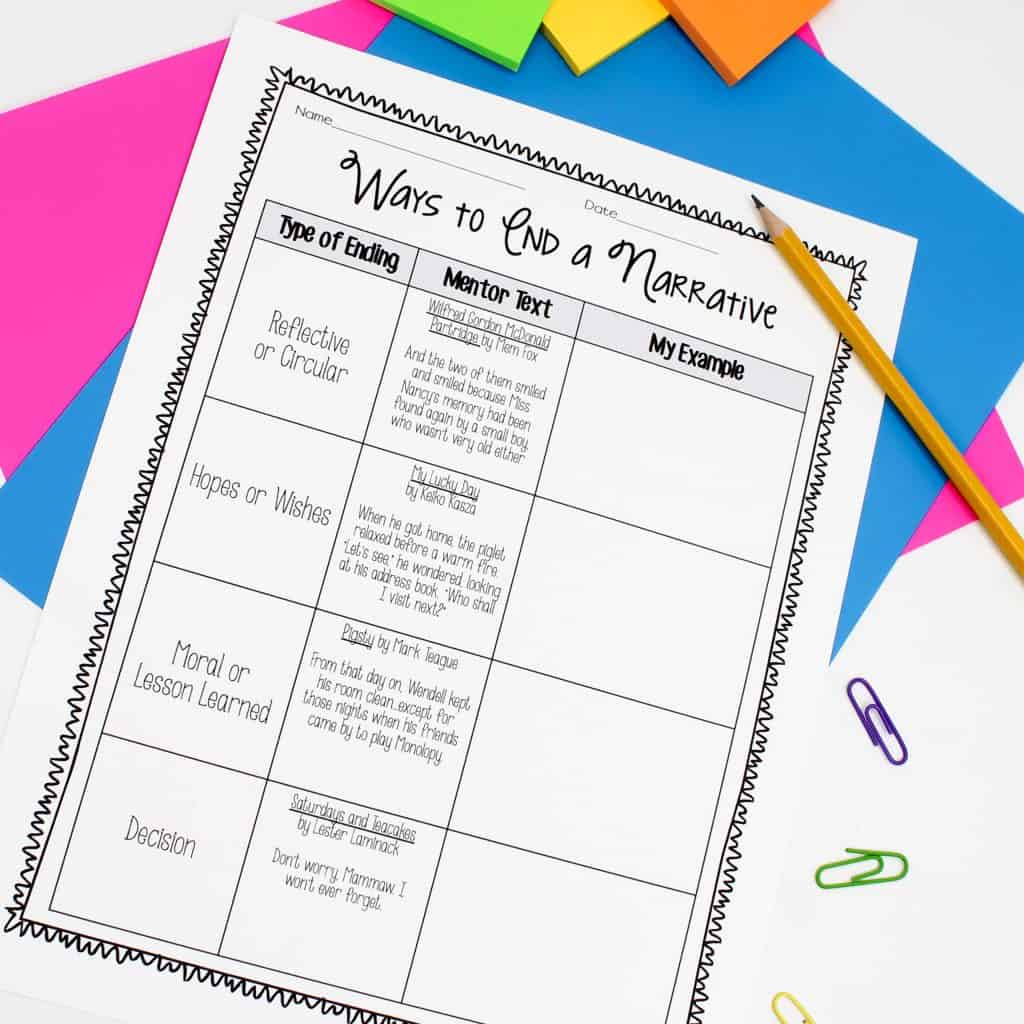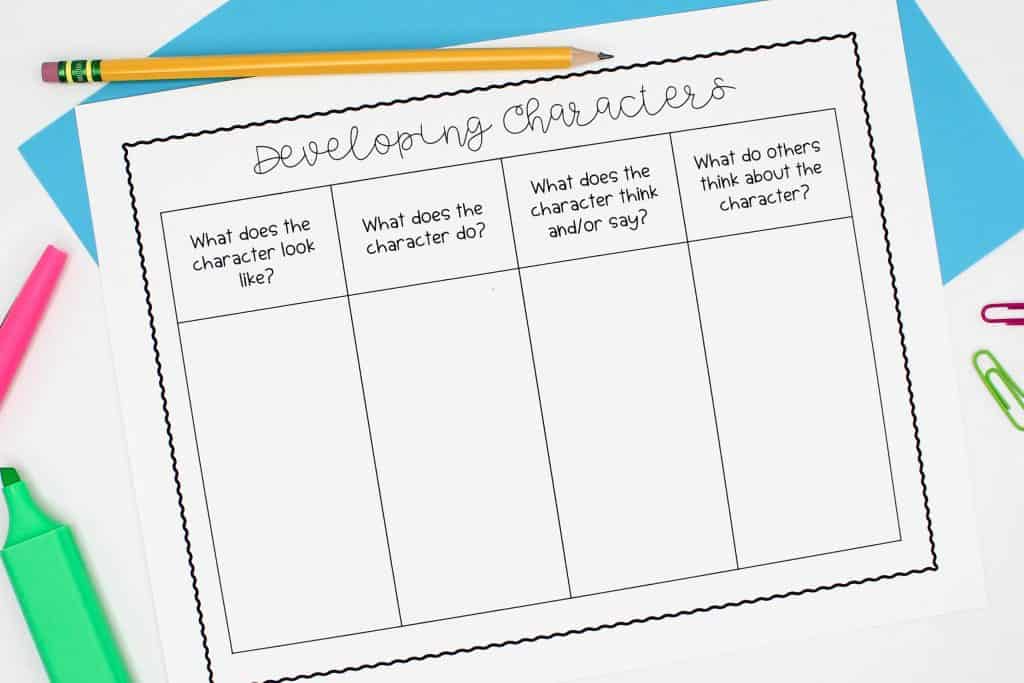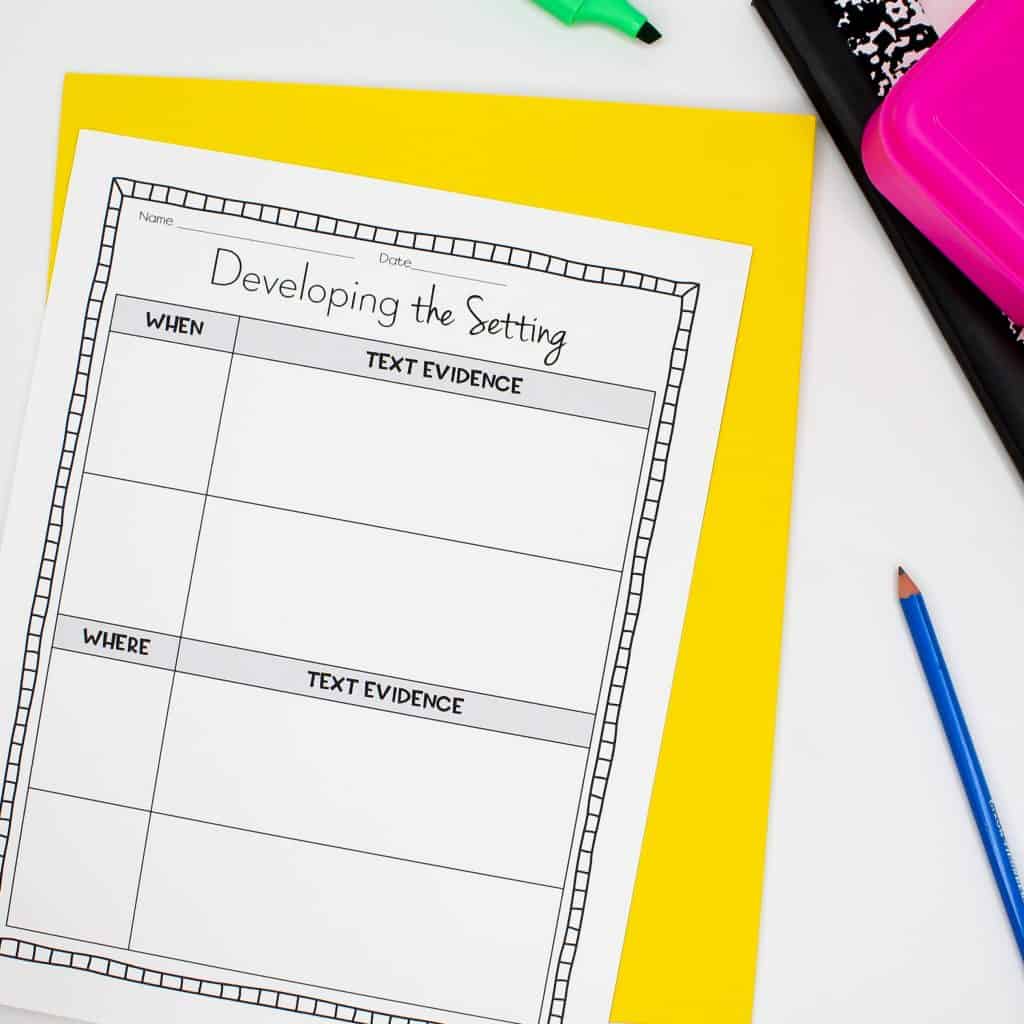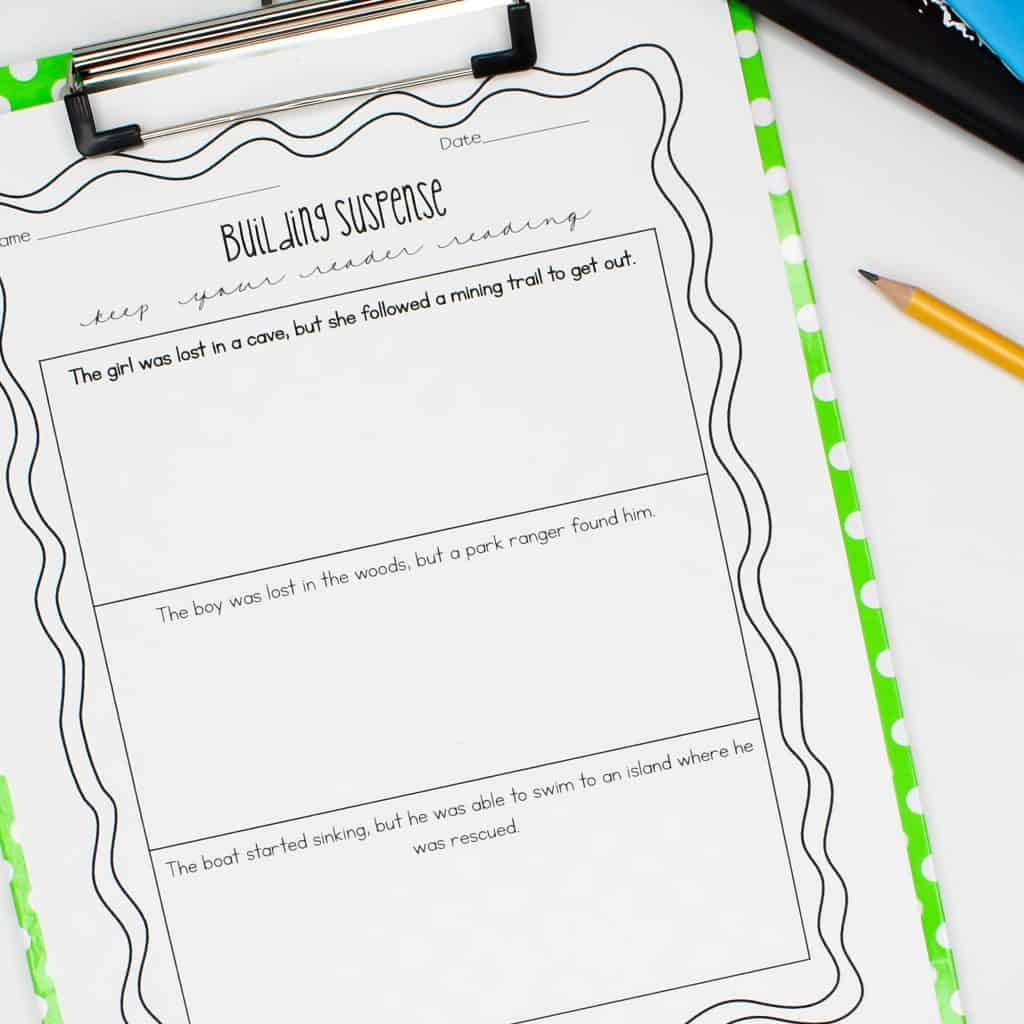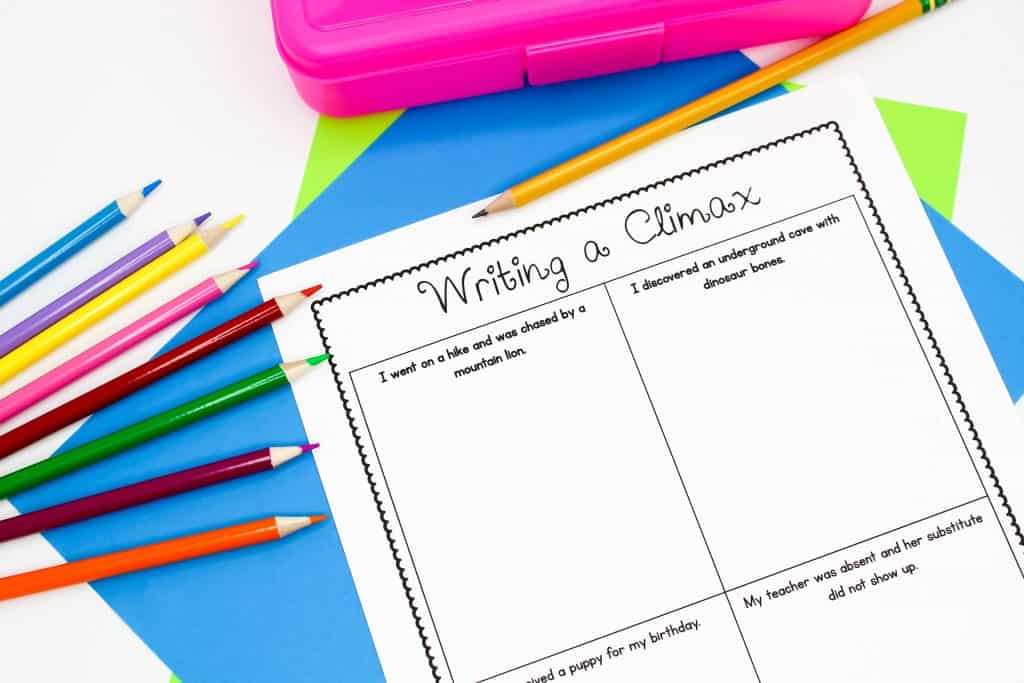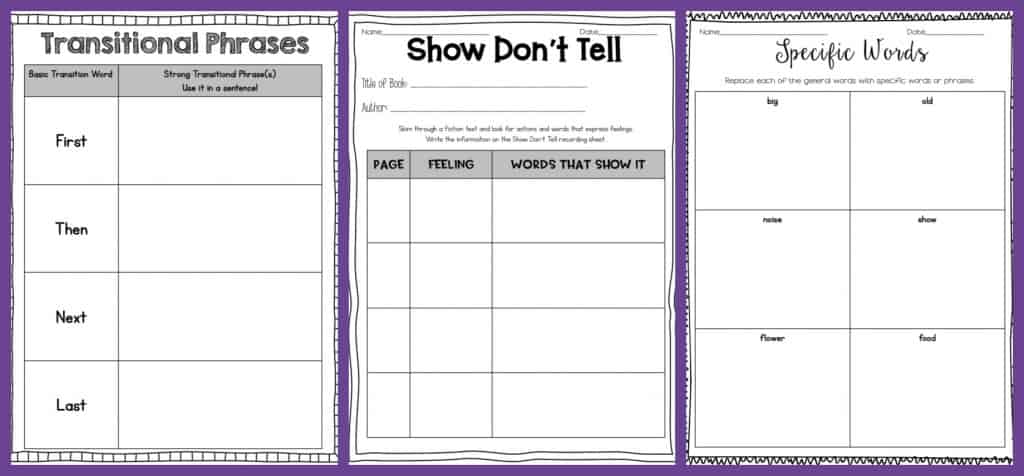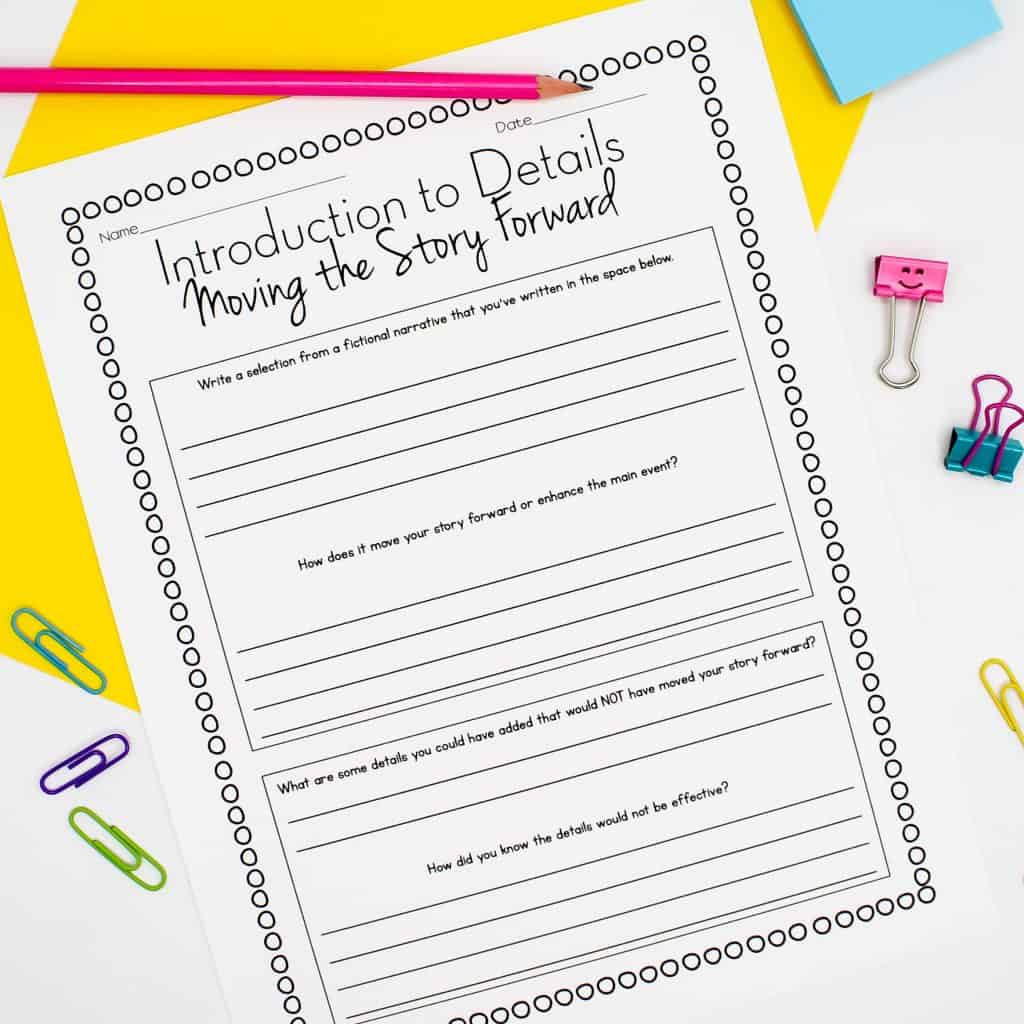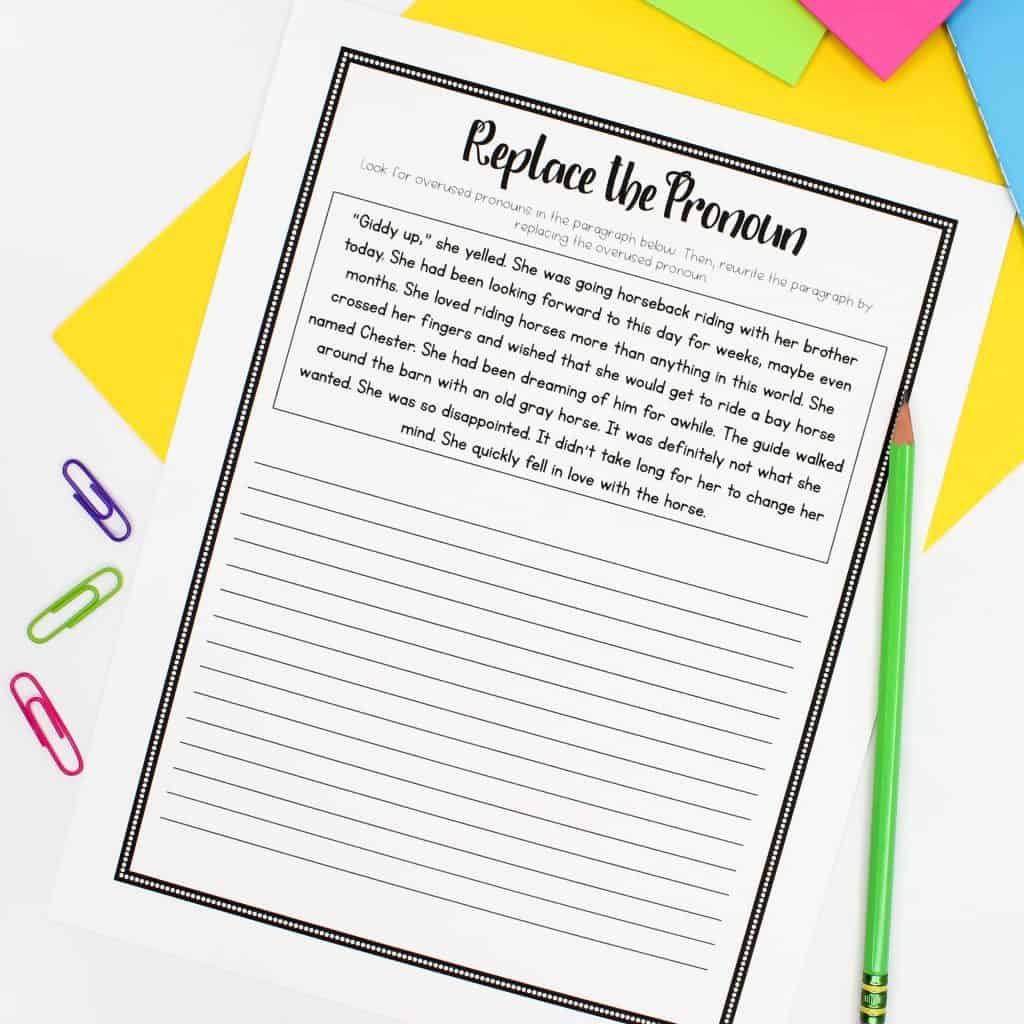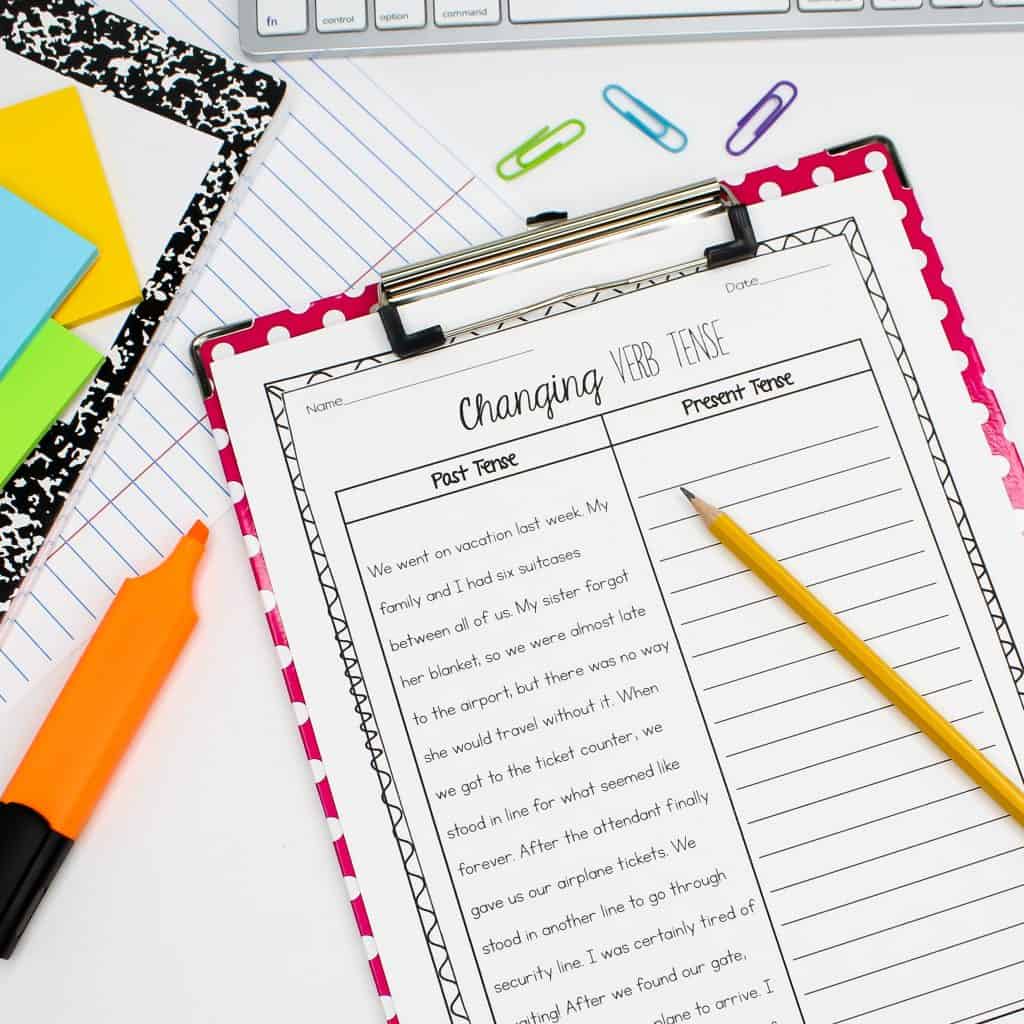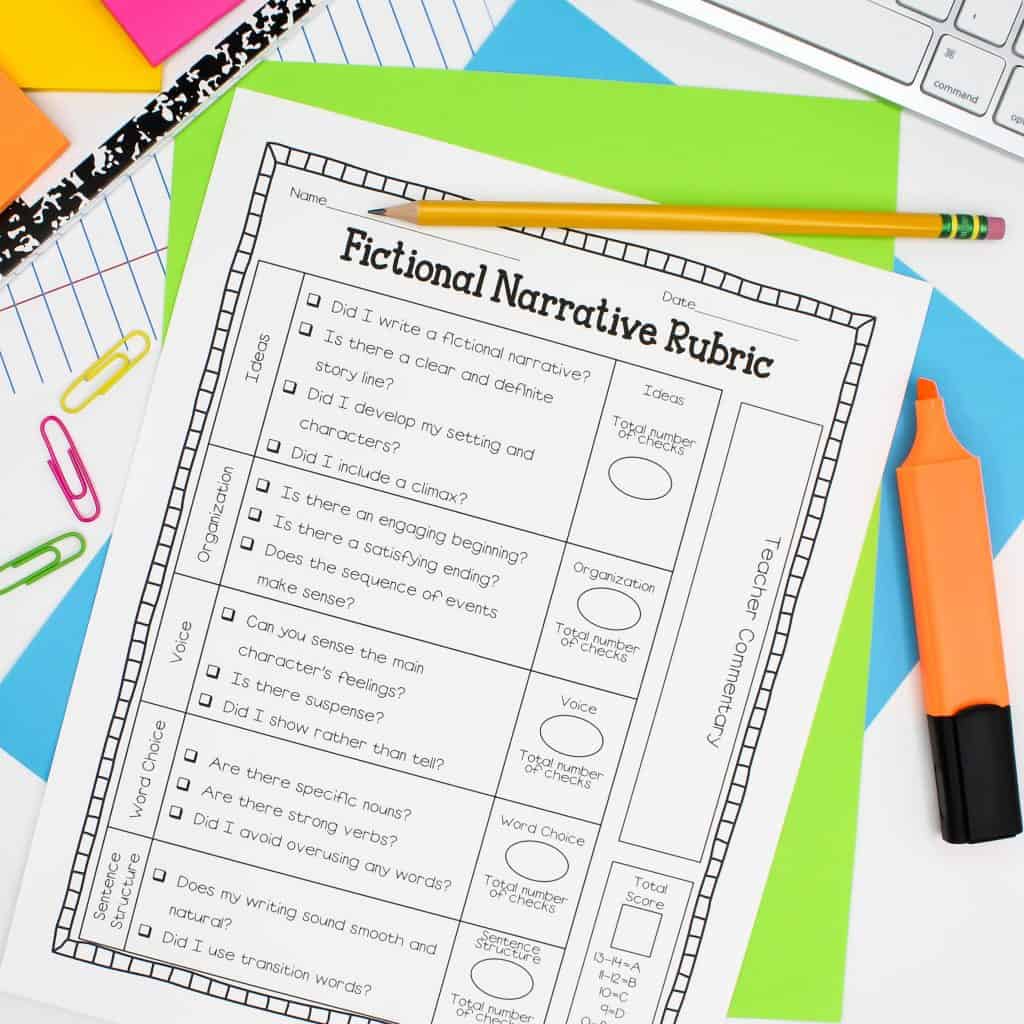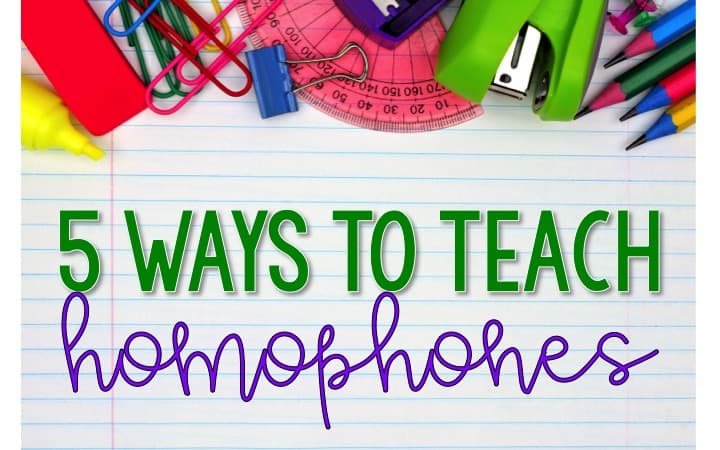Fictional narrative lessons are almost always fun for students! In fact, most upper elementary students love writing fictional narratives. They get to let their creative juices flow and have fun with writing. However, this may be the most challenging writing genre for students. Even though fictional narratives are “fun” they require considerable planning and technique. Since the structure for this style of writing is different from opinion writing, informational writing, and even personal narratives, I teach a writing unit specific to teaching fictional narratives.
Fictional Narratives-The Basics
I begin by teaching about the elements of fictional narratives. (It’s great to tie in these lessons to teaching story elements!) Rather than giving students a writing prompt, show students pictures, and have them think of writing prompts that could be used assigned to the pictures. We refer to those prompts throughout the unit.
If students don’t understand what should be included in a fictional narrative, you’re likely to see long list of events without a problem, much less a climax and solution. Before students begin writing, I have them write summaries of a fictional narrative. Typically, my students are already familiar with writing summaries about books they’ve read, so I extend this into a writing activity.
Students spin to select a character, setting, and problem and write a possible summary. Students understand that they are working backwards. While they do not have an actual story to summarize, they are imaging possibilities that could be used with their story elements. Having students write the summary first is the best way to help them to organize their thoughts.
Organizing Fictional Narratives
When I’m teaching organization, an extremely efficient strategy is to have students complete a reverse graphic organizer. In this fictional narrative lesson, students receive a completed fictional narrative and use the narrative into complete the graphic organizer. Not coincidentally, this is the same graphic organizer they will use when they begin their own writing.
Once students can complete the reverse process of the graphic organizer, they can begin to plan their own fictional narrative. I don’t require students to take each plan through the entire writing process. At this point, I’m happy to have them get their thoughts written down on the graphic organizer.
Fictional Narrative Lessons On Beginning and Ending
I love using mentor texts to teach students how to begin and end their narrative. At the beginning of a lesson, I read a mentor text that illustrates a particular type of beginning (emotion, action, dialogue, or description). Then, as a whole group we select one of the potential writing prompts that we generated earlier and write a beginning using the strategy I modeled. During this part of the lesson, it’s primarily me doing the modeling. Then, I have students break into groups or work with a partner to try writing a beginning to a different prompt using the same strategy.
It can be tempting to skip over some of those lessons or to omit the small group practice, but students typically need that time for practice before independently beginning their own fictional narratives. After students have ample practice, they should look at some of their own graphic organizers or narratives and rewrite their beginnings using one of the strategies.
Character Development
Most students to dive right in and start writing, but I try to get them to slow down and to plan and develop their characters. Once again, this is a great tie-in with reading.
While students may not think that they need this practice, it’s a good way to get them to slow down and to fully develop their characters. I also encourage students to limit the quantity of characters in their narrative. Way to often narratives have too many characters, and it become too difficult for students to manage.
Developing Setting
When students write, they tend to omit relevant setting details. I like to have students complete this graphic organizer that is similar to what students would complete in reading. Students should be able to point out at least two examples of how they have incorporated text evidence about when the story takes place and where the story takes place. If students are still in the planning phase, they may use this as a prewriting tool.
Adding Suspense
Developing plot is often a challenge for students. I often see pages and pages of exposition or rising action and extremely little on the problem or climax of the narrative. I teach students that as they introduce the problem, there should be some element of suspense. To build suspense, we should create uncertainly, anxiety, or doubt.
This is a new writing strategy for many students, so it is beneficial to model how to create suspense and allow students to participate in a brief group writing activity. To model creating suspense write “The girl was lost in a cave, but she followed a mining trail to get out.” Explain that there is no suspense in that statement and show students how they can create questions to build suspense with the reader. After modeling, have students work with a small group to build suspense for a different prompt.
Writing a Climax
Students also need to be taught how to write the climax for a fictional narrative. Most students should only include ONE main scene or climatic event. Otherwise, the story tends to become more than a young writing can maintain. Of course, this can be adapted for students on an as-needed basis.
When teaching how to write a climax, I read a mentor text and point out how the climax is different from a summary of the book. The author could have just stated the obvious, but the climax into typically stretched out into slow motion.
To model writing a climax, I write the summary sentence “she got sick at the fair” on the board. As a whole group, we work together to stretch out the sentence into the climax of the story.
After modeling how to write a climax, I let students work in groups to write a climax for a summary sentence for guided practice. Since this is a fairly complicated skill, it’s important to give students that additional practice. I also follow this lesson with an additional lesson how NOT to write a climax.
This lesson focuses on the “tricks” that students often use that aren’t very effective.
- Supernatural event-Students use this when they can’t think of a way to solve the character’s problem. If the author hasn’t alluded to the potential earlier in the story, this becomes a very unnatural climax.
- Running list of events-These stories ramble and are often boring to the reader. Simply writing a list of events is not high quality fictional narrative writing.
- More problems-You don’t have to keep adding new problems every time a problem is solved. When we do this, the story loses focus.
Revision Lessons
After students have plenty of opportunity to plan, organize, and write, I begin teaching revision lessons. These fictional narrative lessons include transitions, show don’t tell, and using specific words.
One issue that students run into is adding irrelevant details. This is hard because for some students adding details is about like pulling teeth, and I don’t want to deter students from details. However, it’s possible for details to detract from the narrative. In this lesson we focus on making sure details move the story forward.
Editing Lessons
I don’t require students to wait until they are completely finished with their writing to begin editing. As a writer, I don’t believe I could function without correcting errors as I wrote. However, I do save the majority of the editing lessons for the end of the unit.
Even though students will likely need additional instruction and practice, I avoid reteaching the same editing lessons as what I’ve included in my other writing units. In this unit, students focus on pronouns, point of view, and verb tenses.
These are a bit more advanced editing skills, but upper elementary students are ready for the challenge. Plus, it’s a great tie-in to you grammar lessons. (Mentor sentences are included in this unit.)
I’ve created forms for peer feedback, personal revision checklists, editing checklists, and a rubric for an end of unit assessment.
You can find the new fictional narrative here. If you already have the writing bundle, you can download the file again and receive this new addition at NO extra cost! If you want to learn more about teaching writing through writing workshop check out this Guide to Teaching Writing.

